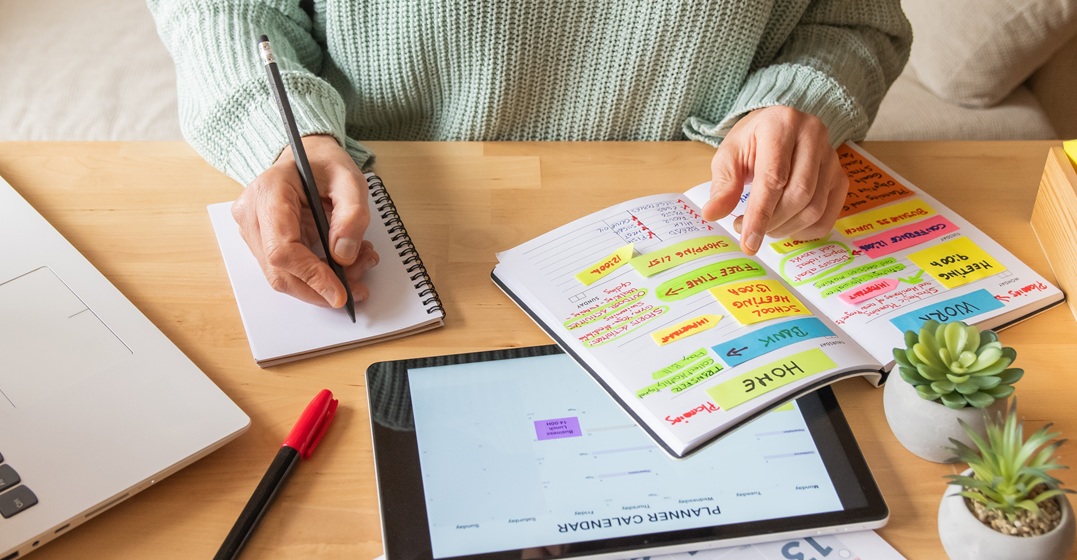List of useful English prepositions

If you’ve been learning English for a while you’ve probably received a list of prepositions. Well, what are prepositions? And how do you use them?
Don’t worry, many people have these questions. English has many prepositions and these small words can be used in different ways.
This article will help you learn the basic prepositions and set you on a path for learning even more.
- What are English prepositions?
- Example sentences for English prepositions
- Common English prepositions list
- Prepositions of place in English
Ready to start learning with Lingoda?
What are English prepositions?
Prepositions are connecting words that are often very short. English has over 100 prepositions. Well what are they and what function do they play?
Some common prepositions are:
with, at, by, to, in, for, from, of, on
These little words and all the other prepositions connect a noun or pronoun to another noun or pronoun. As a reminder, here’s a quick review of nouns and pronouns.
Nouns are people, places or things. Chicago, girl, and tree are all nouns.
Pronouns are words used as substitutes for nouns. I, she, he, you, it, we and they are all pronouns.
Prepositions connect or show the relationship between nouns or pronouns in a sentence.
The book is on the table. In this sentence 'book' and 'table' are nouns. The word 'on' is the preposition. The preposition shows how the book and the table are connected. The preposition tells us the location of the book.
Ready to start learning with Lingoda?
Example sentences for English prepositions
These 9 prepositions, with, at, by, to, in, for, from, of and on, are a good place to start learning. They show the relationship between the nouns.
Let’s look at a few example sentences.
| Example | Explanation |
| I am from California. | From is the preposition connecting the nouns I and California. |
| She lives in the city. | In is the preposition connecting she and city. |
| My brother is at the bank. | At is the preposition connecting brother and bank. |
| They are with the dog. | With is the preposition connecting they and dog. |
| We are going to the store. | To is the preposition connecting we and store. |
| The cat is on the couch. | On is the preposition connecting cat and couch. |
| That money is for my vacation. | For is the preposition connecting money and vacation. |
| The airport is west of the city. | Of is the preposition connecting airport and city. |
| He was standing by the window. | By is the preposition connecting he and window. By means near or next to. |
Common English prepositions list
There are over 100 prepositions in English. As with many things in English we often need to memorize how to use words when there are no clear rules to follow. So, how should you start learning?
Here’s a list of common prepositions with an example sentence.
| Preposition | Example sentence |
| Above | The sky is above the earth. |
| Across | The movie theater is across from the bank. (opposite side of the street) |
| After | I will go to school after work. |
| Against | The door is leaning against the wall. |
| Behind | The dog is behind the couch. |
| Between | The table is between the chairs. |
| Down | My mom wrote down my phone number. |
| Near | He is near the mall. |
| Off | Take the glasses off the table. |
| Out | The cat ran out the door. |
| Under | The mouse is under the couch. |
Prepositions of place in English
Prepositions of place describe where something is located in relation to something else. They help provide clarity in directions, descriptions, and everyday conversations. Here are some of the most commonly used prepositions of place, along with example sentences to illustrate their use:
Common prepositions of place
- In – used when something is inside a space or enclosed area.
Example: The keys are in the drawer. - On – used when something is resting on a surface.
Example: The book is on the table. - At – used to refer to a specific point or location.
Example: We will meet at the bus stop. - Under – used when something is directly below another object.
Example: The shoes are under the bed. - Over – used when something is directly above another object but not touching it.
Example: The picture hangs over the fireplace. - Above – similar to "over," but often used for things that are at a higher position.
Example: The clock is above the door. - Below – used when something is at a lower level than another object.
Example: The temperature today is below freezing. - Between – used when something is in the middle of two objects.
Example: The park is between the school and the library. - Next to / Beside – used when something is immediately adjacent to another object.
Example: The supermarket is next to the bank. - Behind – used when something is at the back of another object.
Example: The cat is hiding behind the curtain. - In front of – used when something is located ahead of another object.
Example: The bus stop is in front of the supermarket. - Inside – used for something that is completely enclosed.
Example: The dog is inside the house. - Outside – used for something that is not within an enclosed space.
Example: The kids are playing outside the school. - Opposite – used when something is facing another object.
Example: The bank is opposite the post office.
Prepositions are important 'to' us
Prepositions are small but mighty. They are often short words, but they are important. They show how nouns are connected by telling us the relationship between nouns. It might take time to learn all the lists of prepositions. Once you do, you’ll be able to expand your vocabulary and fluency with descriptive speech.













